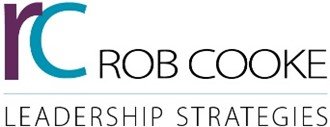
Building an Accountable and High-Performing Culture
As organizational leaders, we are often disappointed that our people are not delivering what is needed or required. Sometimes people deliver what is wanted and expected and at other times we are disappointed that the work of our people is not up to standard or misses the mark. Through my advisory and leadership coaching work over the last thirty years I have concluded that there are three simple foundations that must be in place for people to be willing and able to take ownership and succeed in accomplishing what is required. I also have observed that if people are not delivering what is required it more than likely has a lot to do with the quality of the leadership they are getting. Leaders need to take a careful look in the mirror and ask themselves how they are contributing to the quality of the work they are getting from their people.
I am fully aware that there are greater more complex reasons for under-performance and this paper is not to be considered the entire answer. I have learned, however, that if the three simple foundations are in place there will be substantial improvements in performance.
This article will explore these three foundational elements and provide some suggestions for ensuring they are in place and that you are providing the best leadership possible.
The three foundation elements can be summarized as:
Clear definition and communication of expectations.
Ensuring that people have the capability to do what is needed.
Creating a motivational environment where people will want to do what is expected.
Defining and Communicating Clear Expectations
I have been working with organizational leaders and their teams for over 30 years and I am convinced that the number one reason that people do not deliver what is required is that leaders have not adequately defined or communicated clear expectations and responsibilities.
A review of organizational strategic and operational planning documents across many organizations in multiple sectors highlights a number of consistent and common elements. These documents consistently express values and expectations related to innovation and creativity, customer focus and quality excellence. Most of us will nod in agreement that these are important expectations, but what do they really mean at a practical level and how do people interpret these into their day-to-day work life? If leaders cannot be crystal clear defining specifically what they are looking for and if there is not consistency in how these are being communicated then they should not be surprised if they do not get what they expect.
Before leaders can communicate expectations to their people they need to be clear themselves. They need to be clear on what is required and they need to communicate these clearly and consistently. When a City Council became extremely upset over a service quality issue the city administrator, service executive and service managers all spoke to people in the service group about the need to enhance service quality. Unfortunately the messages were different regarding what needed to change and how it needed to change leaving people confused and frustrated. When people are unclear as to what specifically is expected they will usually do what they want.
Expectations can be communicated on three general levels as outlined in the figure below.
Expectations defined at the result and outcome level communicate what the desired impact will be on customers and stakeholders. In some cases defining the desired results or outcomes is sufficient and people will determine what needs to be produced or delivered. In other cases it will be important to specify the nature of the specific outputs or deliverables that are required. Sometimes it is important for leaders to define specific behaviours that need to be demonstrated or activities that need to be carried out. Determining the level at which expectations should be communicated is a key leadership responsibility.
Ensuring Sufficient Capability
The number two reason that people are not delivering on expectations is that they ‘can’t’. Something is preventing success. The term ‘capability’ can broadly mean anything that is preventing people from doing what is needed.
When people understand what they need to do and deliver and they are motivated to do it the only thing standing in the way of success is that there are barriers in the way of their success. They do not have the necessary skills, knowledge, capacity, resources, authority, technology or support to be successful.
The most common capability issue that I am encountering is lack of capacity to accomplish the work. Most people today more work on their plates than they can handle. It is important that leaders help their people define their priorities and find a way to postpone, abandon or delegate lower priority work. A tool that seems to work for my coaching clients is to log their time, by the hour, for a two week period. Following the two week time logging exercise, the leaders align actual time spent against their priorities and goals to determine if there is a match or miss-match.
The most common skill gaps I find in most organizations relate to communication, decision making, leadership and planning. Leaders need to provide feedback on performance, identify skill deficiencies and work with their people to identify concrete plans for enhancing their capability through training, coaching or mentoring.
The Impact of Culture on Performance
Organizational cultures can be a key contributor to enhanced performance. They can also put up barriers to success. Jack Welch of GE fame is credited with the statement that “culture eats strategy for breakfast.” The implication is that regardless of a great vision and defined strategies the power of a culture can override the best plans. I suggest to leaders that they understand clearly the current culture of their organization and how it both contributes to and inhibits desired performance and then to identify what about the culture they would like to change.
It is often stated that is takes 20 years to change a culture. For most of us we don’t have that long to see change. While it may take a longer time to change the fundamental values and beliefs that drive the visible aspects of culture you can shift behaviour in a relatively short period of time. To do this you need to take defined, concrete and consistent action. Everything you do and say reflects the culture you want to create.
Edgar Schein describes the primary drivers of culture change as what leaders do on a daily basis. People carefully watch and emulate what leaders do and they draw conclusions on desired behaviour and on what is important. A great deal of their conclusions are based on where they see leaders spending their time, how they react in a crisis, where they allocate scarce resources and who they promote.
If you want to shift the culture of your organization you must ensure that everything you do and say is focused on creating it.
Creating a Motivational Environment
When people know what needs to be done, have the capability to do it but don’t, the missing ingredient is motivation. A lack of motivation is the final reason that people do not do what is needed. They basically know what needs to be done, are fully capable of carrying it out but they would rather do something else. Motivation is about people wanting to deliver what is expected or needed. Leaders are responsible for ensuring that they create a motivational environment that rewards desired behaviour and discourages unwanted behaviour.
Motivation theory is not new. From Douglas McGregor’s Theory X and Y to Maslow’s hierarchy of needs we see a differentiation between what are referred to as motivators and inhibitors. Motivators create a positive feeling that people are making a meaningful contribution. They arise form intrinsic conditions of the work itself and include a sense of accomplishment, recognition for our achievements, carrying out work that is personally challenging and knowing that we are working at our full potential. Leaders must never underestimate the power of positive motivators.
Leaders who focus their efforts on improving the compensation or increasing the status of their people can only hope to achieve that their people will not be angry at perceived inequities. While leaders need to get this right, they are a neutral motivator at best.
If we believe in the premise that most people come to work to do the best job they can we need to understand what prevents them from achieving this. In almost all cases it is something that is not being effectively managed by their leaders.
Take a Look in the Mirror
We have reviewed the three elements that need to be in place if people are going to take ownership, deliver what is needed and be successful.
If you are not getting this from your people it is really an issue with your leadership!
It is up to YOU to clarify and confirm what you expect
It is up to YOU to enhance people’s ability to perform
It is up to YOU to demonstrate and reinforce the desired culture
It is up to YOU to create a positive motivational environment
It is up to you to ‘look in the mirror’ and assess your own leadership performance.
Bill O’Brian who was a highly regarded CEO of Hanover Insurance clearly stated that “personal transformation must precede business transformation.” Do you understand what this really means?
Peter Drucker states, “That one can truly manage other people is by no means adequately proven, but one can always manage oneself.” As a leader you need to step back from the day to day grind and do some work on yourself.
As a leader it is up to you to step back and identify what it is that you need to change or do better if you are going to be a more effective leader.
About the Author: Rob Cooke is a leadership advisor, strategist and coach. Drawing on a strong background in business and organizational development, Rob utilizes his extensive consulting experience to help leaders address emerging challenges, seize opportunities and execute approaches to achieve personal, leadership and business goals
June 22, 2017 | Leadership Development


